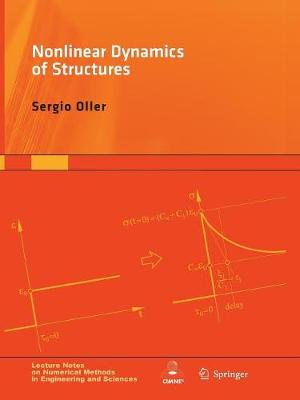Lecture Notes on Numerical Methods in Engineering and Sciences
2 total works
This book lays the foundation of knowledge that will allow a better understanding of nonlinear phenomena that occur in structural dynamics.
This work is intended for graduate engineering students who want to expand their knowledge on the dynamic behavior of structures, specifically in the nonlinear field, by presenting the basis of dynamic balance in non-linear behavior structures due to the material and kinematics mechanical effects.
Particularly, this publication shows the solution of the equation of dynamic equilibrium for structure with nonlinear time-independent materials (plasticity, damage and frequencies evolution), as well as those time dependent non-linear behavior materials (viscoelasticity and viscoplasticity). The convergence conditions for the non-linear dynamic structure solution are studied and the theoretical concepts and its programming algorithms are presented.
Numerical Simulation of Mechanical Behavior of Composite Materials
by Sergio Oller
An original mechanical formulation to treat nonlinear orthotropic behavior of composite materials is presented in this book. It also examines different formulations that allow us to evaluate the behavior of composite materials through the composition of its components, obtaining a new composite material. Also two multiple scale homogenization methods are given, one based on the analytical study of the cells (Ad-hoc homogenization) and other one, more general based on the finite element procedure applied on the macro scale (upper-scale) and in the micro scale (sub-scale).
A very general formulation to simulate the mechanical behavior for traditional composite structures (plywood, reinforced concrete, masonry, etc.), as well as the new composite materials reinforced with long and short fibers, nanotubes, etc., are also shown in this work.
Typical phenomena occurring in composite materials are also described in this work, including fiber-matrix debonding, local buckling of fibers and its coupling with the overall buckling of the structure. Finally, several numerical examples that evaluates the qualities and capabilities of the general model formulated are offered in this book.
This book is intended for graduate engineering students who want to expand their knowledge of composite structures behavior.

